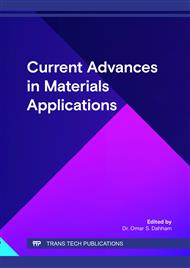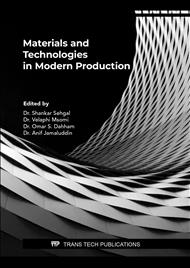p.167
p.177
p.189
p.201
p.213
p.223
p.233
p.243
p.257
Study some Mechanical and Thermal Properties of reinforced Perlite Concrete
Abstract:
Expanded perlite as an aggregate in concrete may make insulating concrete and fire-resistant suitable for roof decks and other purposes. Expanded perlite aggregate (EPA) may be used with gypsum plasters and Portland cement to protect columns, beams, and external applications. Other building uses are chimney linings, under-floor insulation, ceiling tiles, gypsum boards, and roof insulation boards. The primary goal of this research is to learn more about the effects of employing perlite aggregate (EPA) as a partial or complete substitute for sand on various characteristics of expanded perlite concrete (EPC) at 7 and 28 days. Air-dry density, compressive strength, water absorption, flexural strength, and thermal conductivity are all investigated in this research. EPA replacement by volume of sand was used to create five EPC mixes with 0%, 25 %, 50 %, %, and 100%. The effects of introducing 0.5% polypropylene fiber on the characteristics of EPC mixes were investigated. To increase the EPC workability, superplasticizer was utilized, particularly at the higher EPA replacement levels. The test outcomes reveal that the measured mechanical and physical properties of EPC decrease when increasing the EPA content. Thermal insulation of EPC increases with increasing the percentage of perlite aggregate replacement. In addition, using polypropylene fibers in the EPC specimens cause a slight reduction in density, compressive strength, and thermal conductivity compared to unreinforced specimens. Polypropylene fibers significantly increase in modulus of rupture reach 29% at 28 days, and increase in water absorption compared with unreinforced specimens.
Info:
Periodical:
Pages:
233-242
Citation:
Online since:
June 2022
Price:
Сopyright:
© 2022 Trans Tech Publications Ltd. All Rights Reserved
Share:
Citation:



